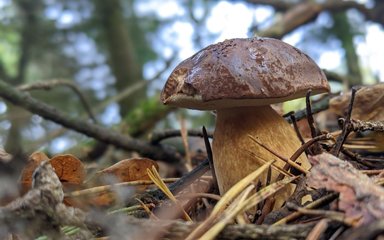
We’re letting nature transform more than 8,000 hectares of land in four of the nation’s forests.
Our vision is for the nation’s forests to become the most valuable places in the country for wildlife to thrive and expand. To help us achieve this, we’re creating large, wild areas in four forests where we’ll work with nature to restore fully-functioning ecosystems.
These areas in Northumberland, North Yorkshire, Dorset and Somerset will see more than 8,000 hectares of land transformed by nature recovery, whilst still producing sustainable timber and continuing to welcome visitors. Discover more about our approach to creating wilder forests and the four wild areas below.
A different type of forestry
As England’s largest land manager, we can restore nature at a landscape scale in a way that few others can. By putting nature at the forefront of the way we’ll be managing the land in these four wild areas, we’ll be trialling a bold, new approach to forestry.
This will include having a wider, more natural selection of tree species, a more varied structure in woodlands, and a mix of other nature-rich areas such as grasslands, fens and heath. We will also return important native animals to these areas, where they will help restore natural processes and allow other species to flourish. By intervening less, natural processes will be allowed more space to shape the forest landscape.
We have a long experience of working at a landscape scale to restore natural processes through our Wild Ennerdale partnership in the Lake District, which has run for 20 years. Here we are restoring this wild valley to become more resilient, diverse and nature rich.
Visitors to the wild areas will have a wilder, more immersive nature experience in a landscape where space is given for wildlife to move and thrive. This work is being supported by biodiversity funding from the Department for Environment, Food and Rural Affairs (Defra).
Wild Kielder in Northumberland
Kielder Forest in Northumberland will host the biggest of our new wild areas, covering at least 6,000 hectares of forest, grassland and moorland. Focused on the East Kielder forests and Kielderhead moors, the aim is to restore a fully-functioning upland ecosystem.
We will be expanding native woodland, planting trees suitable for wetland, encouraging scrub and creating a more open habitat. We'll also be making space for water, 'rewetting' and restoring peatland and 'rewiggling' water courses.
Wild Kielder aims to identify nature-based solutions for climate change and biodiversity loss. We're delighted that Forest Holidays, our first major biodiversity corporate partner, are contributing funding for Wild Kielder over five years.

Wild Purbeck in Dorset
Wild Purbeck covers an area of 2,261 hectares and is made up of a mix of woodland, wetland and lowland heath. It includes Wareham Forest, Hethfelton Wood, plus Rempstone Forest which is part of Purbeck Heaths 'super' National Nature Reserve.
Building on decades of habitat enhancement, we will increase the use of natural processes to help wildlife and plants thrive in this area. This includes restoring lost wetland areas and using grazing animals to naturally manage vegetation and turn over the ground to encourage plant growth.
More space for native plants will be made by removing non-native, invasive plants such as rhododendron. Forests in the wild area are being managed to increase the diversity of tree species and ages. The team are using a range of techniques to encourage natural regeneration in addition to tree planting.
Wild Newtondale in North Yorkshire
Newtondale is nestled within North Yorkshire's renowned North York Moors National Park. Spanning 458 hectares, this site includes diverse habitats such as conifer and broadleaved forests, rugged cliff faces, and picturesque fen landscapes. The landscape also includes agricultural fields, steep bracken-covered slopes, and pockets of wilderness including mires, species-rich grasslands, and wet flushes.
Our mission at Wild Newtondale is to recover this precious ecosystem for generations to come. Through thoughtful land management, we aim to enhance biodiversity by creating more dynamic woodlands, reintroducing essential herbivores, and fostering the growth of species that are vital to the local, regional, and national ecosystem.
Wild Neroche in Somerset
Wild Neroche lies at the northern edge of the Blackdown Hills National Landscape in Somerset. The landscape is made up of deciduous woodland, restored pasture, wet heathland, and even-aged conifer plantations with regenerating broadleaf. Our vision for Wild Neroche is a richer, more vibrant and wilder sanctuary for nature.
Our ambition is to deliver landscape-scale ecological enhancement in collaboration with our partners and neighbours. The reinstatement, acceleration, or replication of natural processes will produce a landscape defined by water; woodland evolving successfully with our changing climate; habitat havens for invertebrates, mosses, and liverworts; thriving communities of lichen and fungi; and dynamic and biodiverse ecosystems where animals and plants move freely across Neroche.
We're delighted that Tesco Nature Partnership is supporting the first year of the Wild Neroche project.



